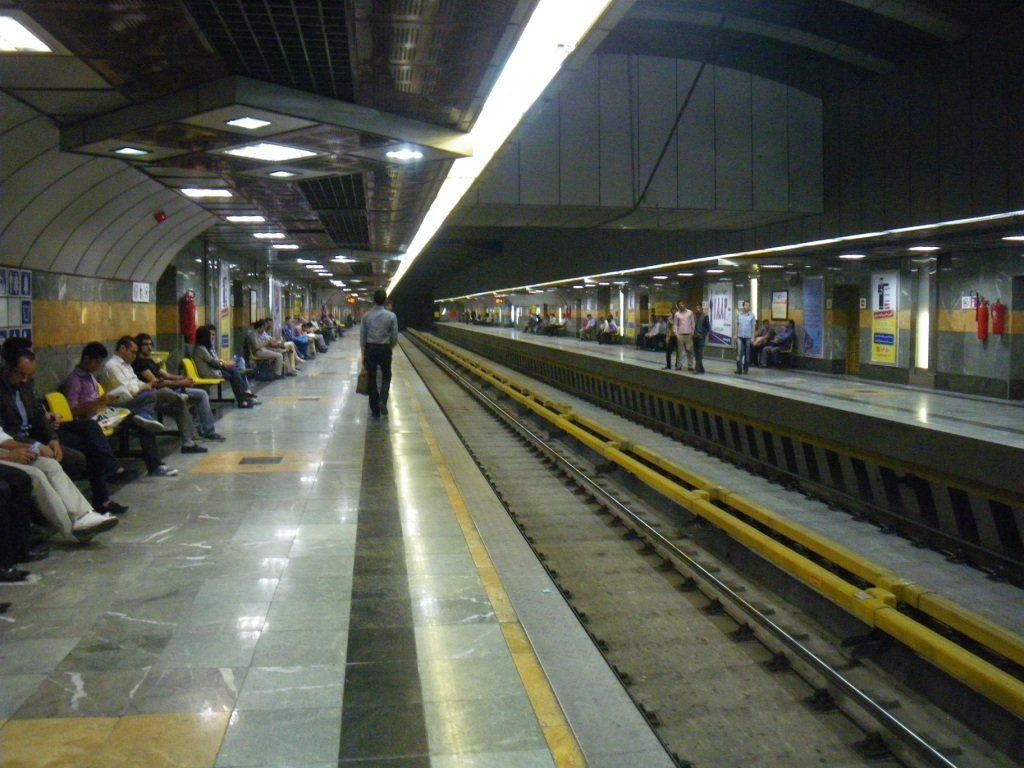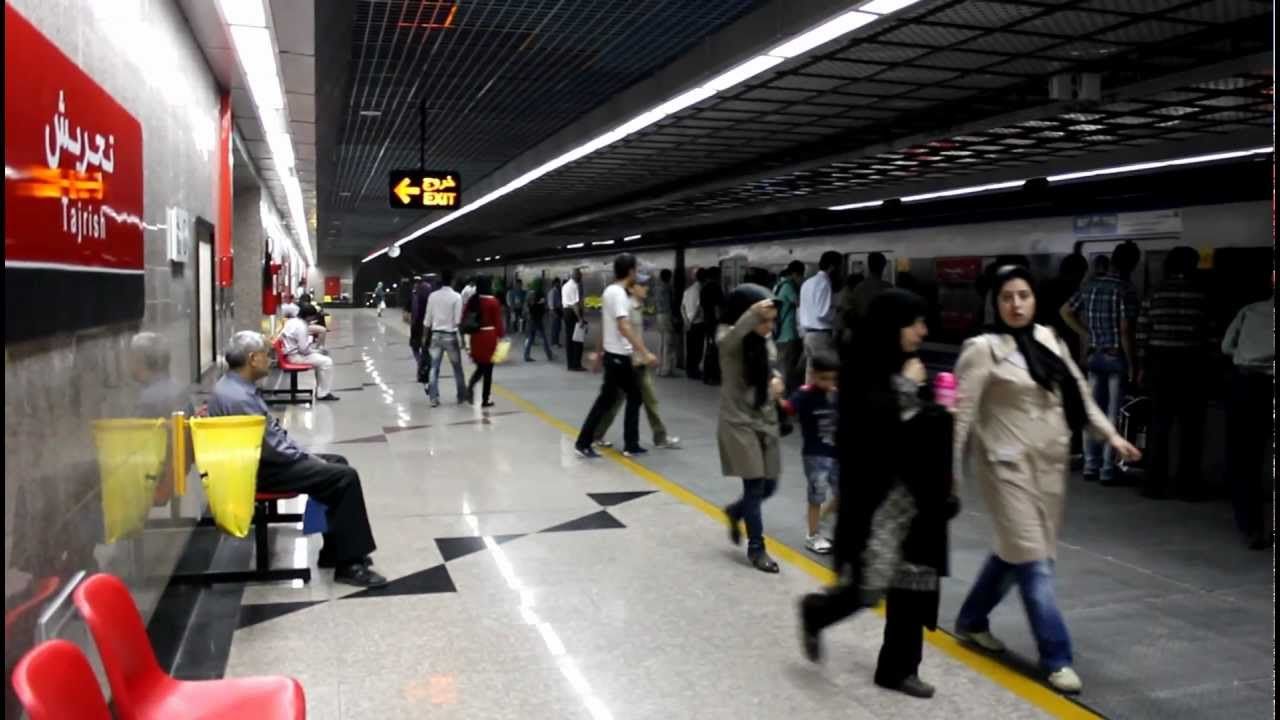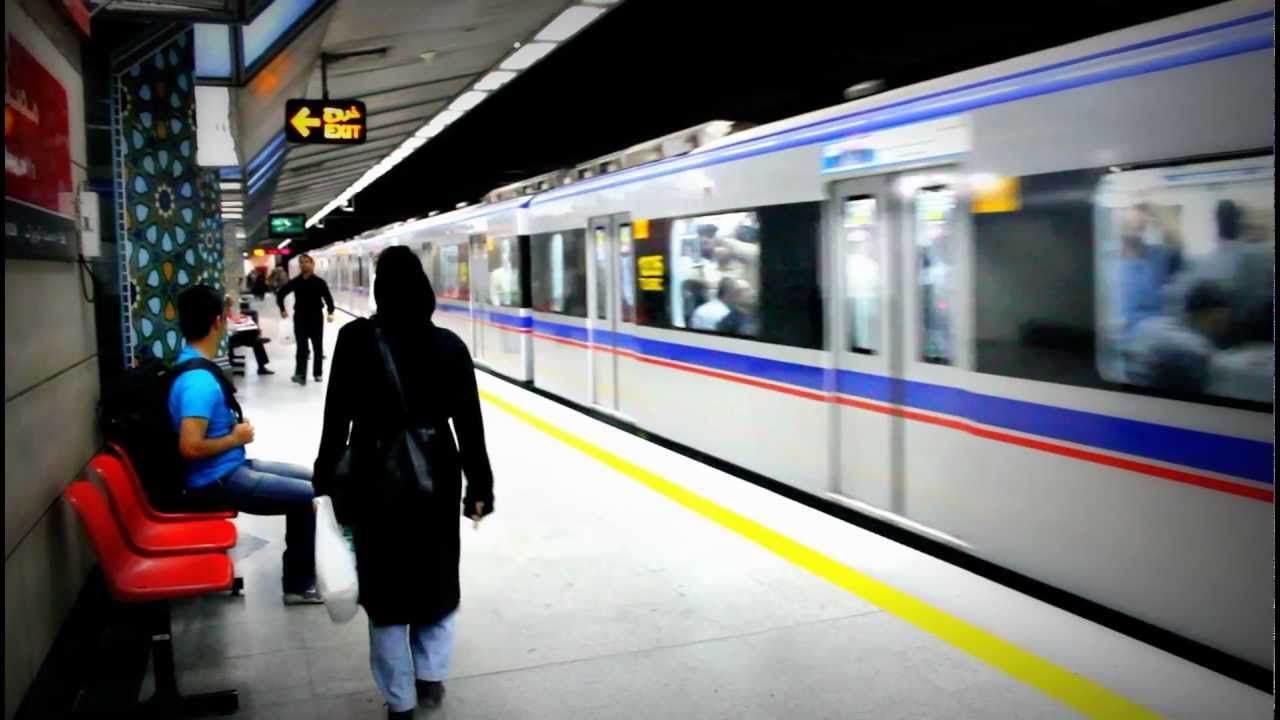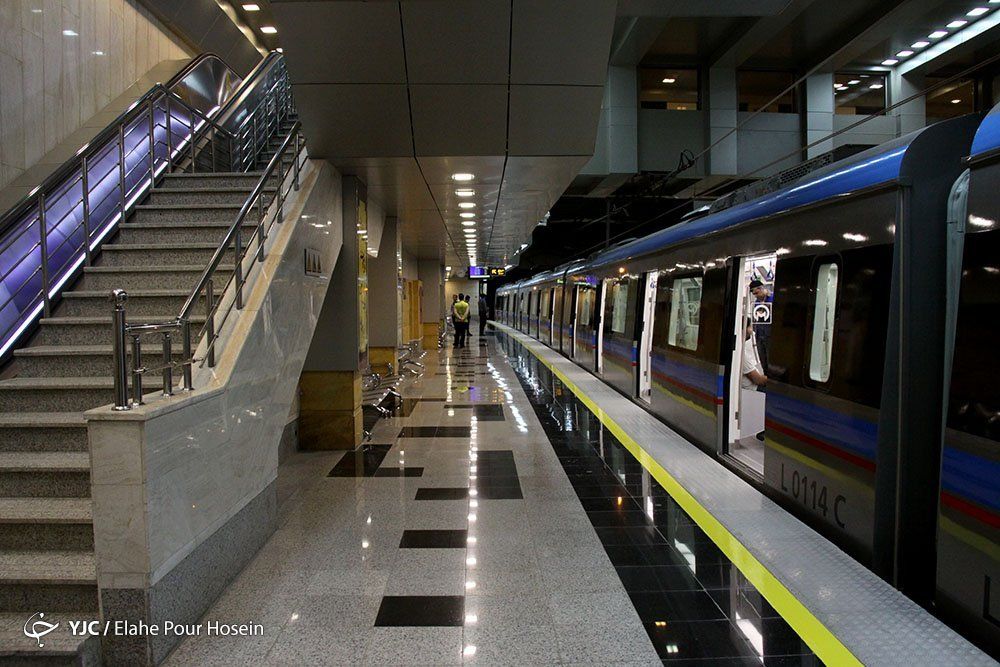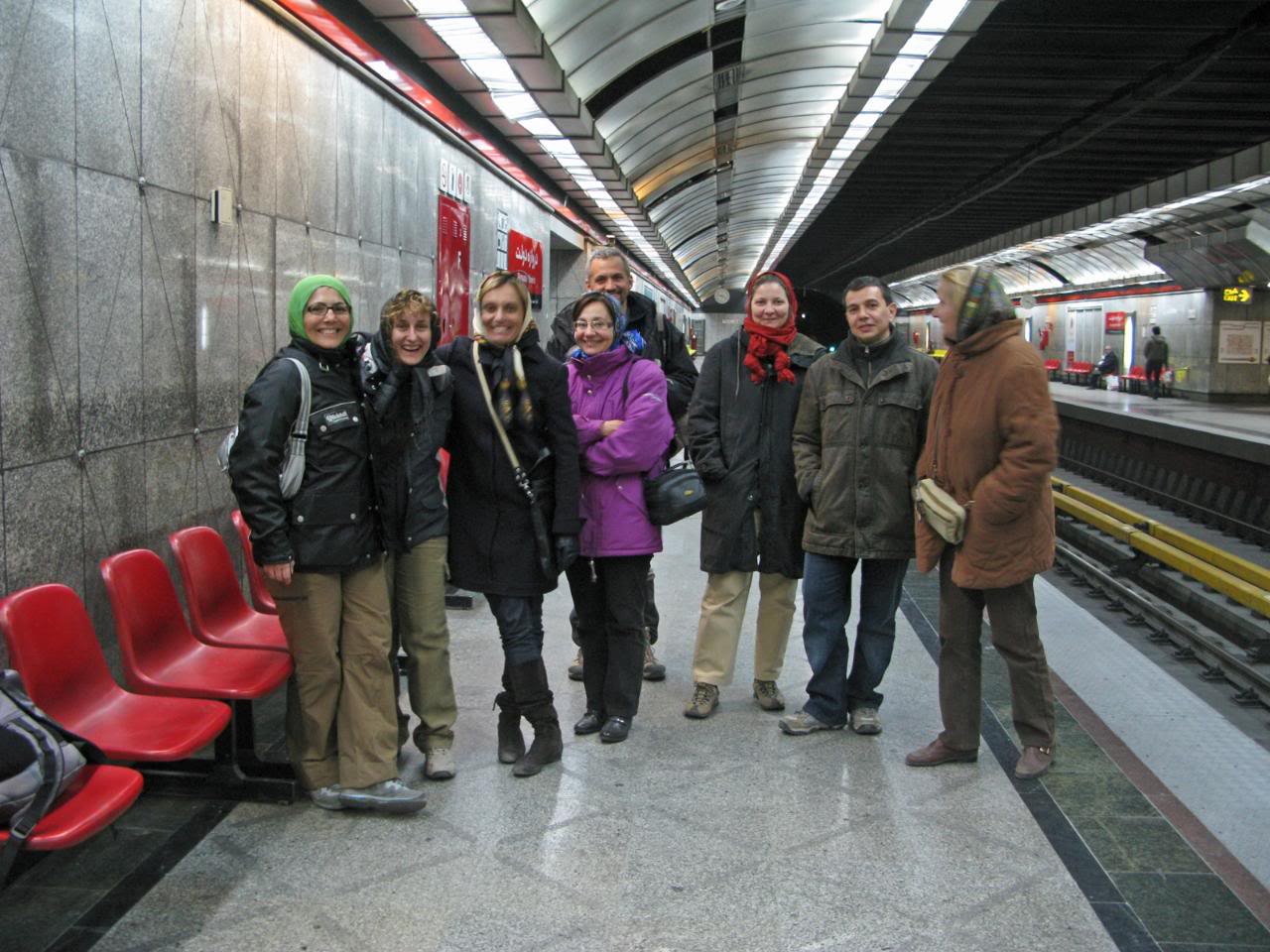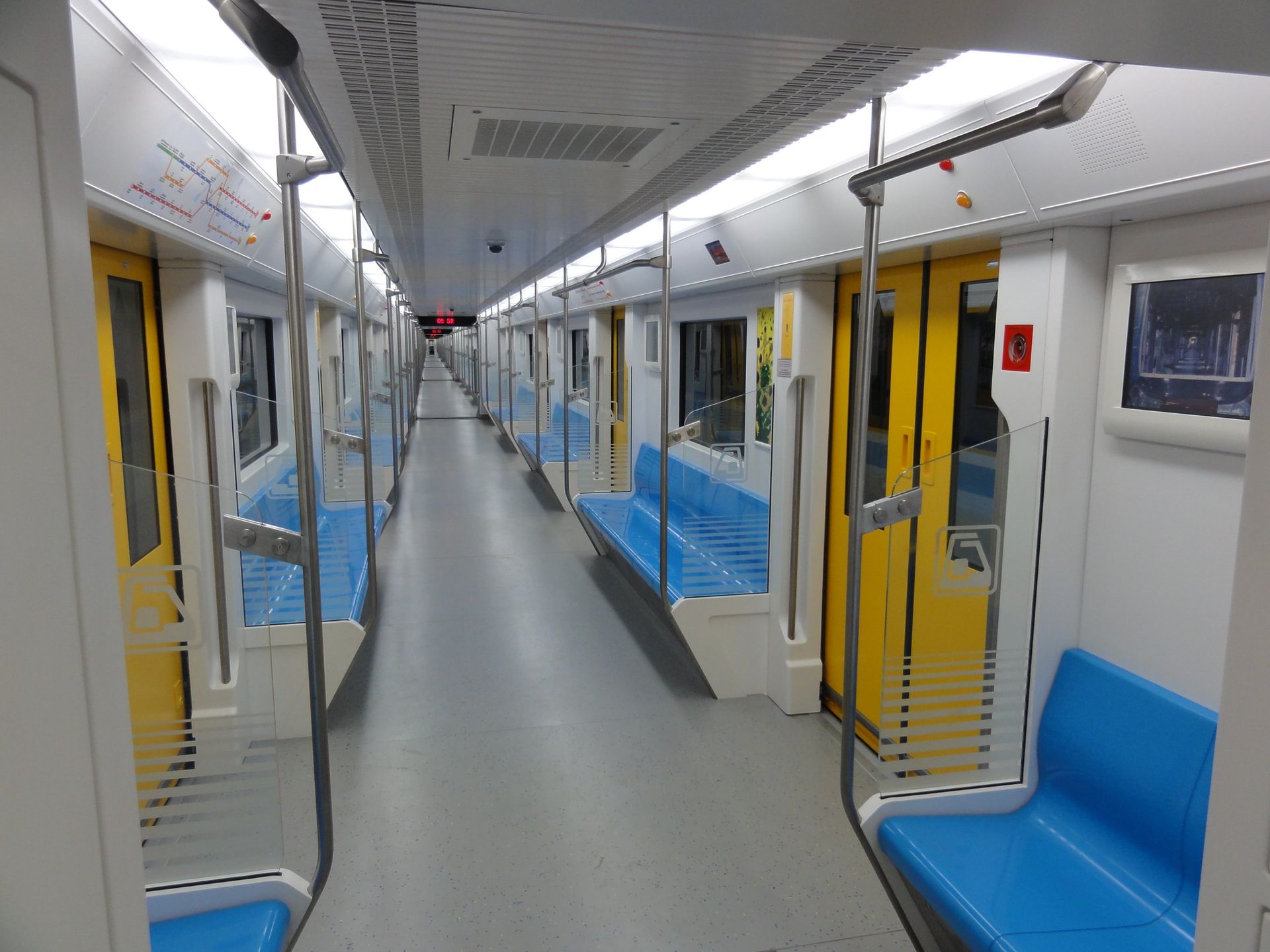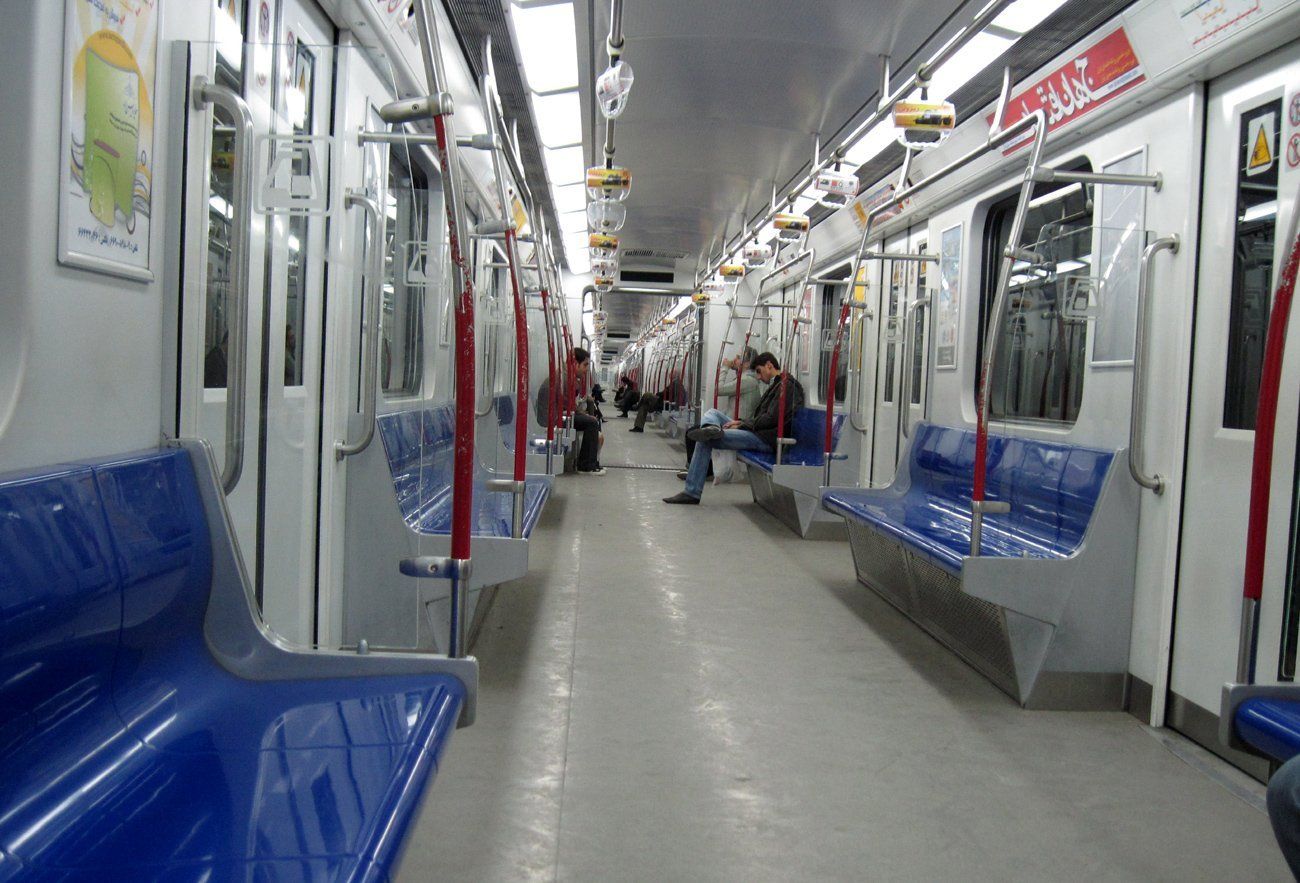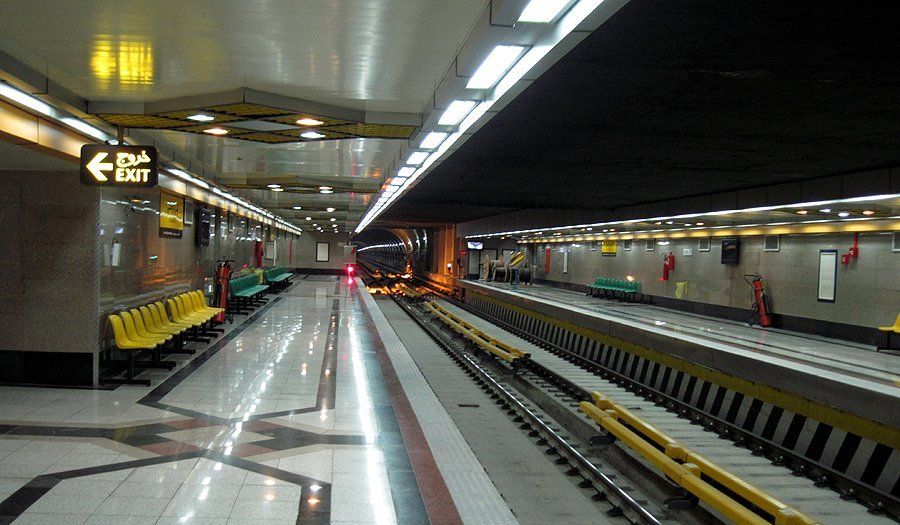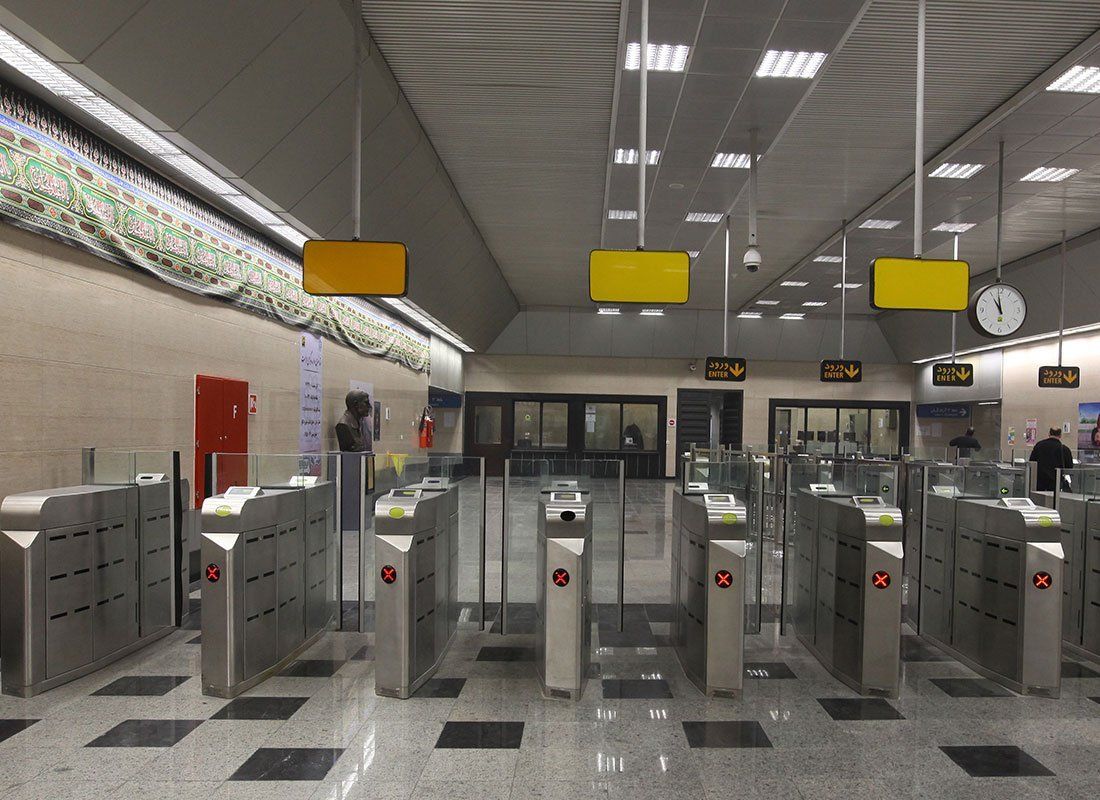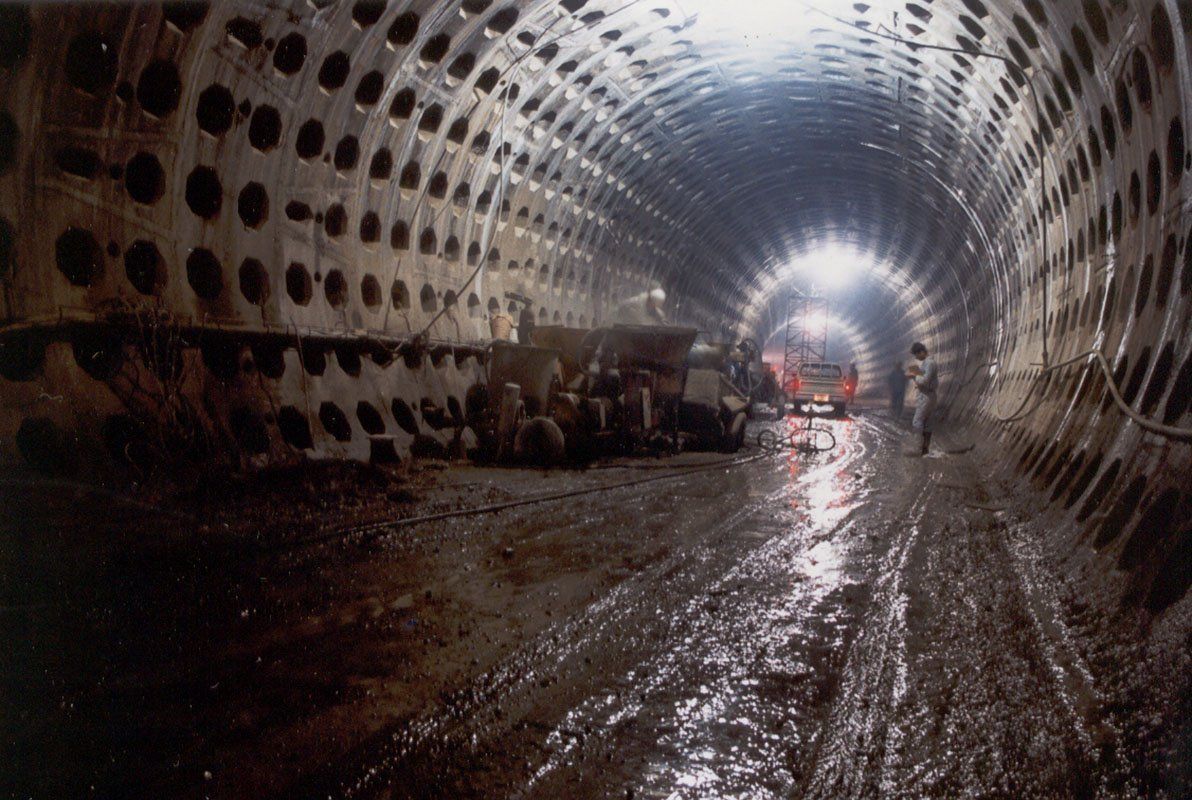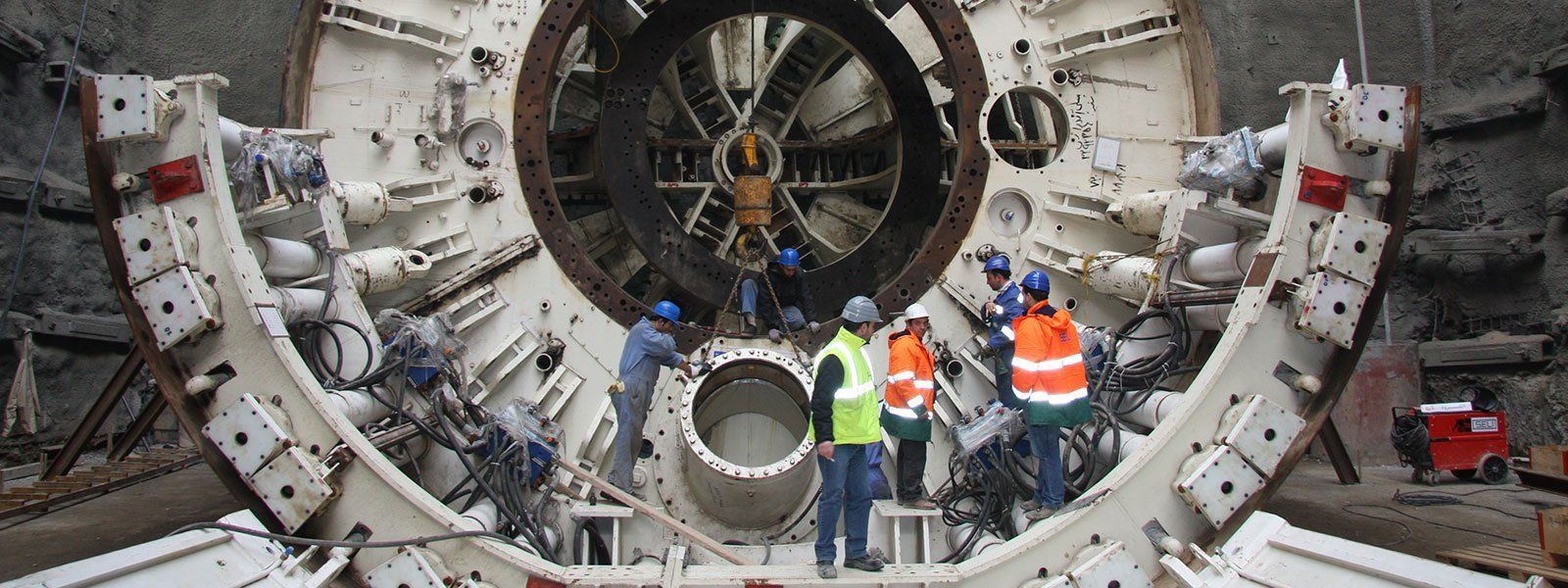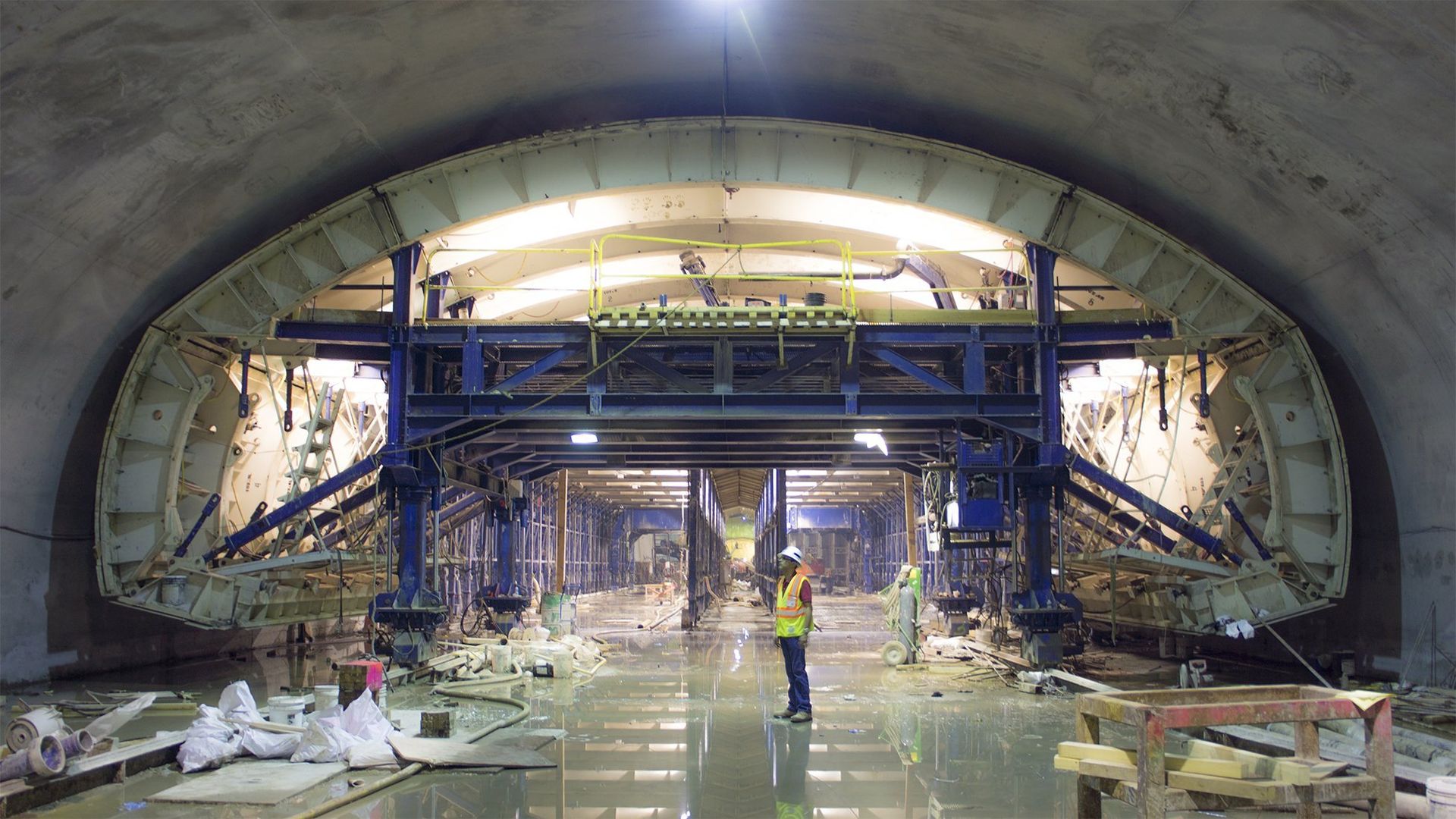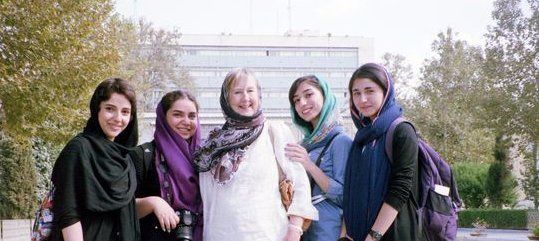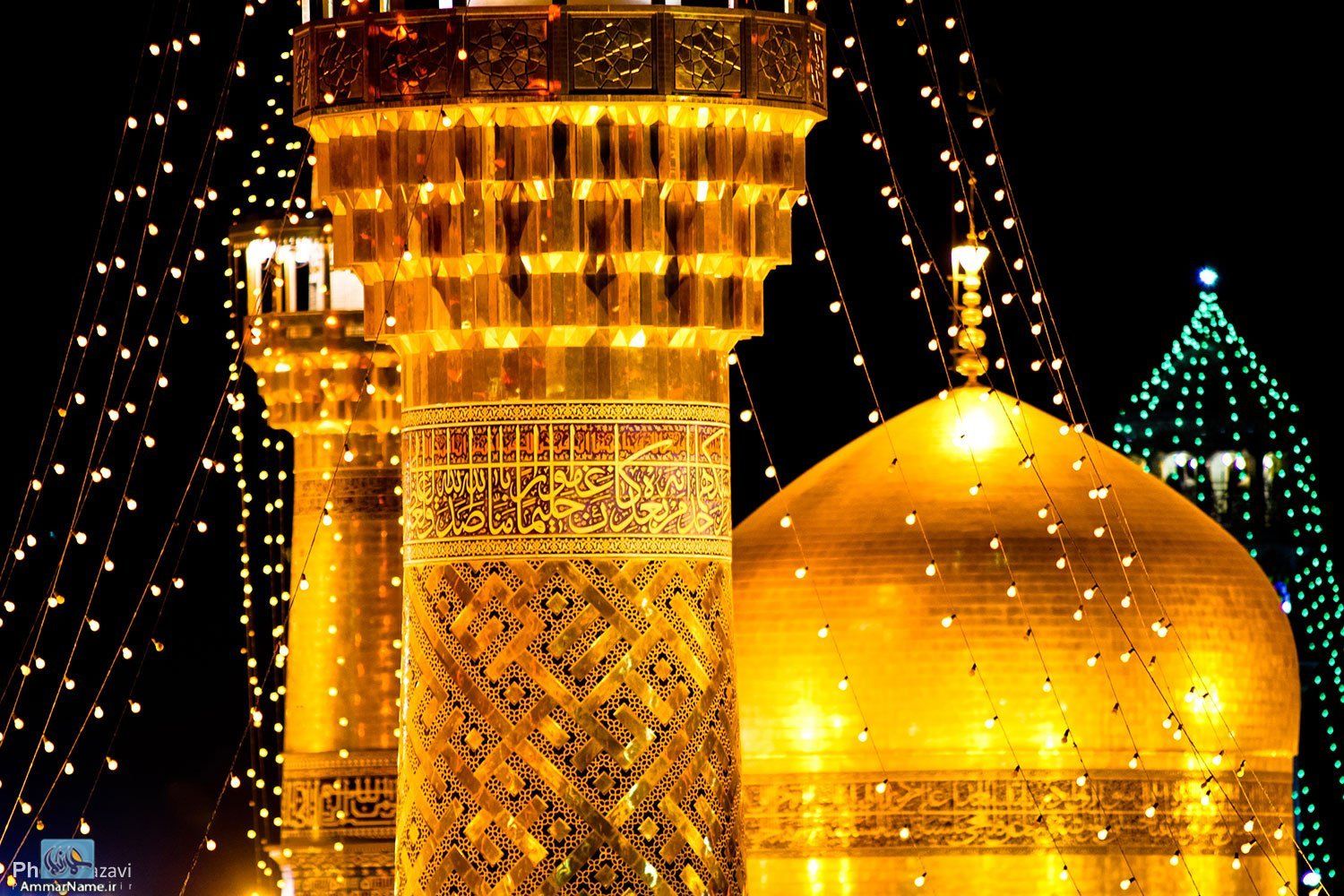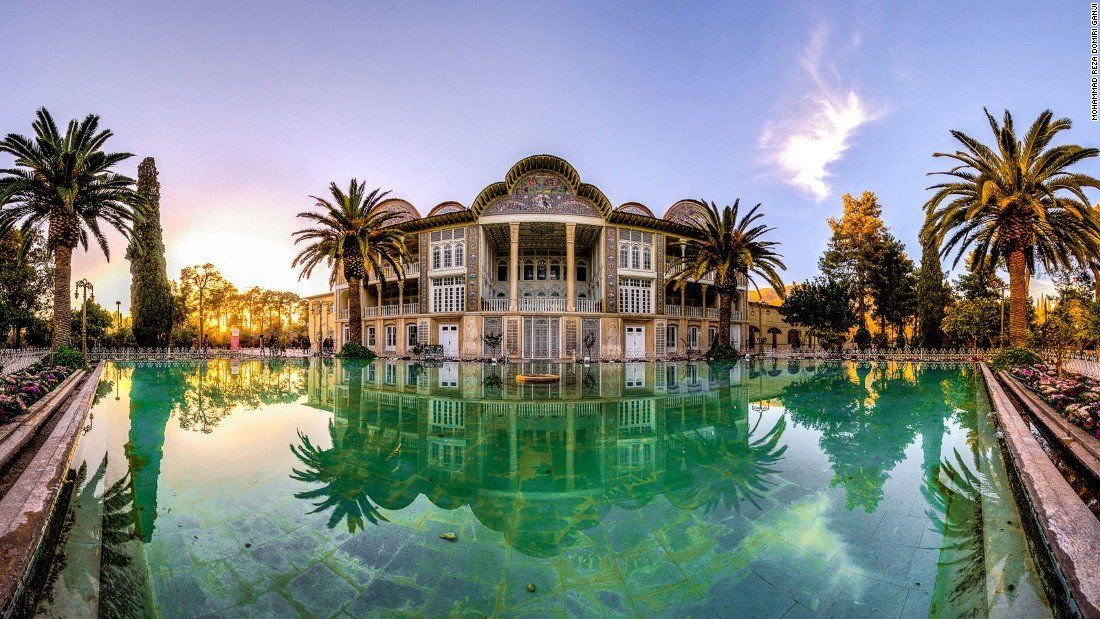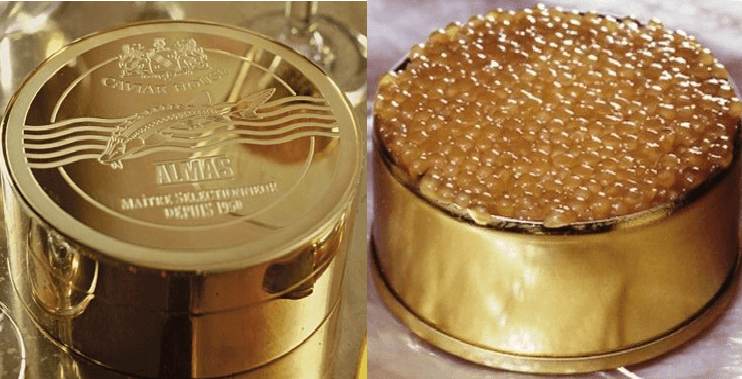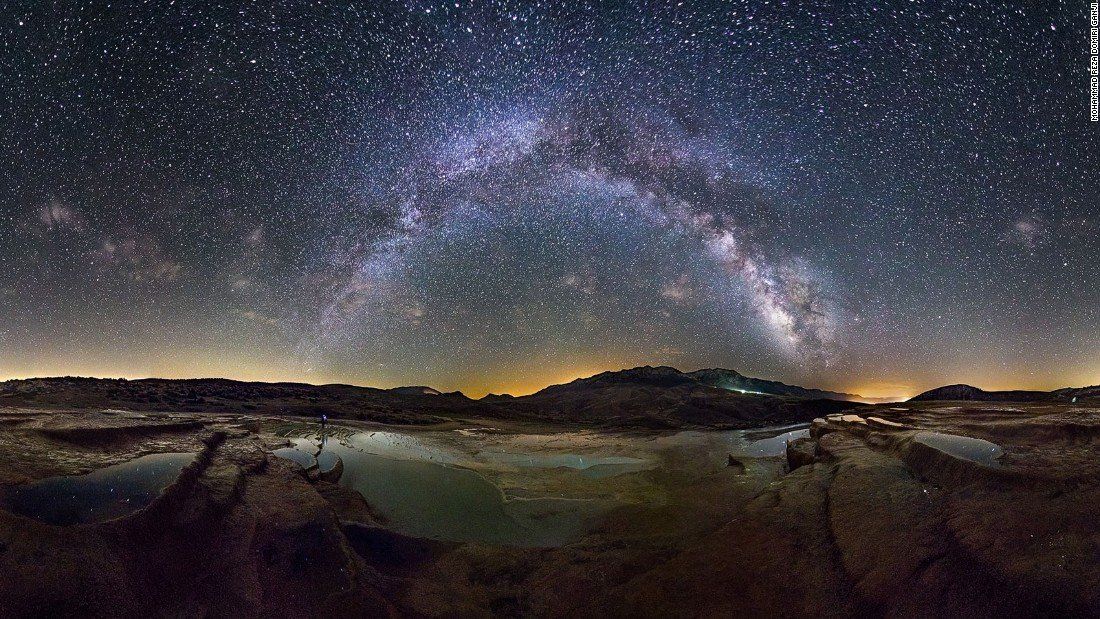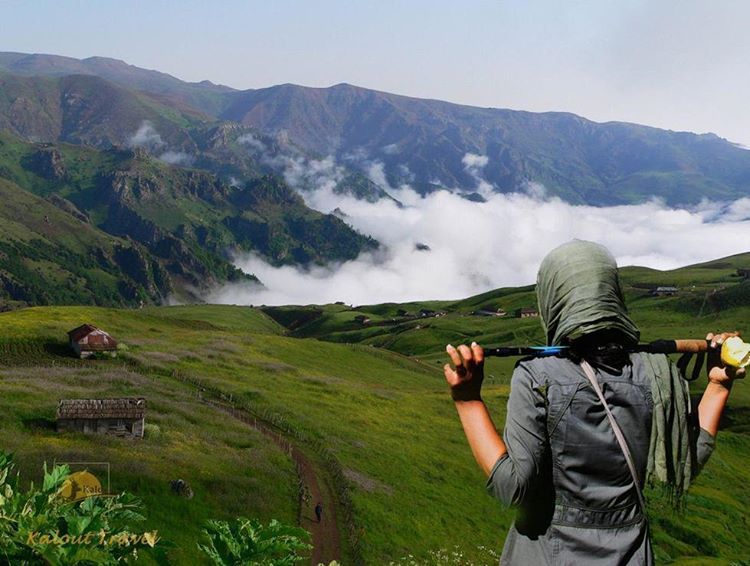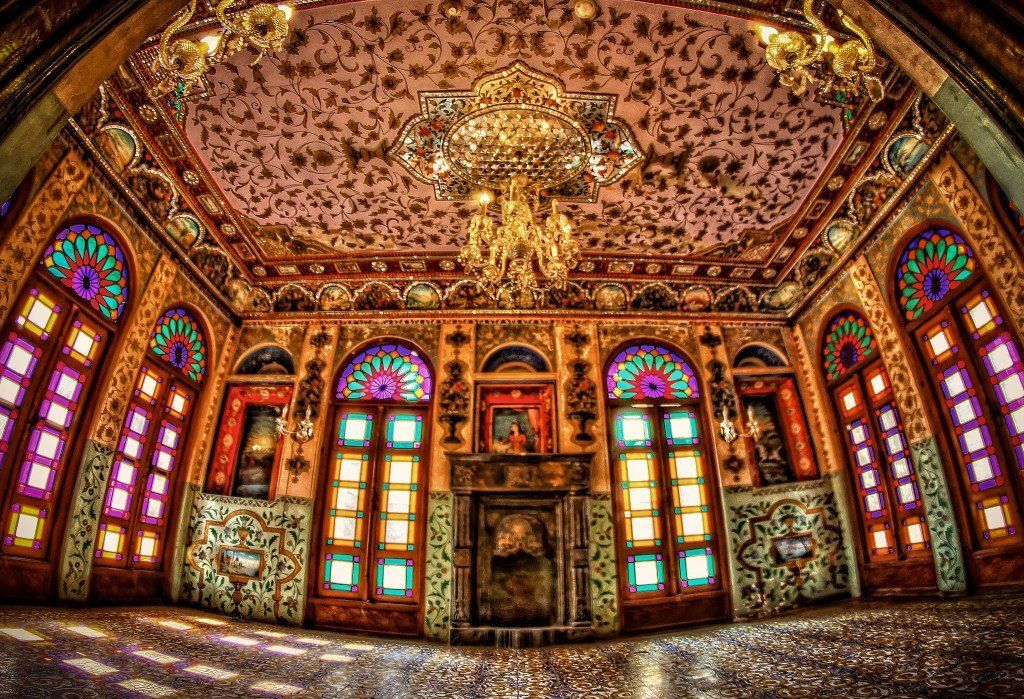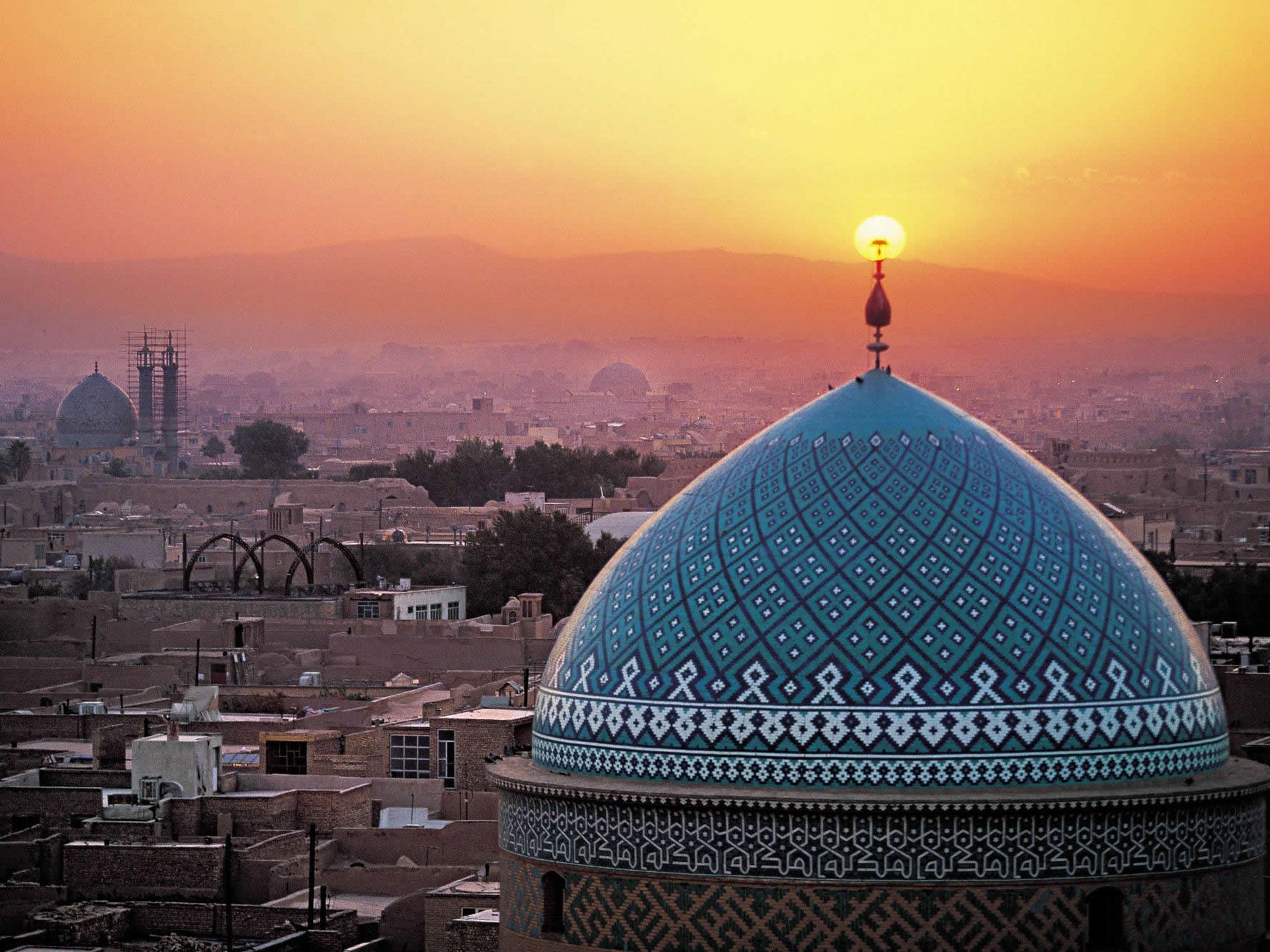
Tehran Subway
The Tehran Metro (Persian: متروی تهران Metro-ye Tehran) is a rapid transit system serving Tehran, the capital of Iran. The system consists of four operational metro lines (and a fifth commuter rail line), with construction begun on a further two lines in 2007.
The Tehran Metro carries more than 3 million passengers a day. In 2014, 815 million trips were made on Tehran Metro. As of 2015, the total system was 170 kilometers (110 mi) long, 127 kilometers (79 mi) of which it metro-grade rail. It is planned to have a length of 430 kilometers (270 mi) with 9 lines once all construction is complete by 2028.
On all days of the week, the Metro service runs from approximately 05:30 to 23:00.
The line uses standard gauge and is partly underground. Ticket price is 5000 IRR for each journey (about USD 0.15), regardless of the distance traveled, but using prepaid tickets costs much less. Seniors may travel for free on the metro. On all Tehran metro trains the first, the second, and the last carriages are reserved for women who do not wish to ride with men in the same car. Women can still ride other cars freely.
History
The initial plans of the Tehran Metro, which was to be Iran's first metro system, were laid out before the Iranian revolution in the 1970s. In 1970 the Plan and Budget Organization and the Municipality of Tehran announced an international tender for construction of a metro in Tehran. The French company SOFRETU, affiliated with the state-owned Paris transportation authority RATP, won the tender and in the same year began to conduct preliminary studies on the project. In 1974 a final report with a so-called "street-metro" proposal was tendered. The street-metro system recommended a road network with a loop express way in the central area and two highways for new urban areas and an 8-line metro network which were complemented by bus network and taxi services. Geological surveys commenced in 1976. In 1978 construction on the line was started in northern Tehran by the French company, however this development was short-lived with the advent of the Iranian Revolution and Iran–Iraq War in 1979 and 1980 respectively. SOFRETU ceased operations in Iran in December 1980. On March 3, 1982, the Iranian Cabinet ministers formally announced the stop of Tehran Metro operations by the French company.
In 1985, the "Tehran Metro Execution Plan" was re-approved by the Majles, the Iranian Parliament, on the basis of legal project of "Amendment of Law of Establishment of Tehran Urban and suburban Railway Company" which had been founded on Farvardin 1364 (April 1985). This was a literal continuation of exactly the same project that had been laid out before the revolution. Work proceeded slowly due to the continuing Iran–Iraq War and often ground to a halt.
By the summer of 1985, urban pressure from the rapidly urbanising population, and lack of developed public transport system prompted the work to be resumed in earnest. "Line 1" (From Blvd. Shahid Ayatollah Haghani to City of Rey) and its extension to Behesht-e-Zahra Cemetery was made a priority. "Line 2" (From Dardasht in Tehran Pars district to Sadeghiyeh Second Square) and an extending towards the City of Karaj and Mehrshahr district was also made a secondary priority. Studies were also made to establish the previously designed Lines 3 and 4. It was decided that an organisation by the name of the Metro Company should be established in order to handle the future development of the system.
Following this phase, the Metro Company was managed by Asghar Ebrahimi Asl for eleven years. During this time, hundreds of millions of dollars were spent on the system and the Metro Company was given government concessions for the exploitation of iron ore mines in Bandar Abbas (Hormuzgan Province), exploitation and sale of Moghan Diotomite mine in Azarbaijan Province, export of refinery residues from Isfahan oil refinery as well as tar from Isfahan steel mill . The year after Asghar Ebrahimi Asl left the management of the Metro Company and Mohsen Hashemi succeeded him, the first line of the Tehran Metro was launched between Tehran and Karaj.
On 7 March 1999, an overland Tehran-Karaj express electric train started a limited service of 31.4 km (19.5 mi) between Azadi Square (Tehran) and Malard (Karaj) calling at one intermediate station at Vardavard. The line was constructed by the Chinese company NORINCO.
Line 5 of the Tehran metro began operating in 1999 and was Iran's first metro system.
Golshahr {Line 5} rapid transit line stations.
From 2000 onwards, commercial operation began on Lines 1 and 2. The wagons on these lines are provided by CRV via CNTIC. The railway tracks and points on these lines are provided by the Austrian company Voestalpine.
The Metro uses equipment manufactured by a wide range of international companies: Double-deck passenger cars for the Tehran-Karaj regional line are supplied by CRV (although some trains are from SEGC) via CNTIC and assembled by the Wagon Pars factory in Arak.
As of 2010 approximately $2 billion has been spent on the Metro project. The Tehran Metro transports about 2.5 million passengers daily through its 5 operational lines (1, 2, 3, 4, 5) with two lines (1 and 3) are still being developed by Tehran Metro Company with another two lines (Lines 6, 7) under construction and line 8 in engineering phase. New 80 wagons have been added to the system in September 2012 to ease transportation and reduce rush-hour congestion. Iran is able to produce its need in wagons and trains independently.
A 2.8-kilometre (1.7 mi) branch line of Line 4 began running to Mehrabad International Airport on 15 March 2016.
Lines
| Line | Opening | Length | Stations | Type |
|---|---|---|---|---|
| 1 | 2001 | 47.5 km (29.5 mi) | 30 | Metro |
| 2 | 2000 | 26 km (16 mi) | 22 | Metro |
| 3 | 2012 | 37 km (23 mi) | 16 | Metro |
| 4 | 2007 | 24.5 km (15.2 mi) | 22 | Metro |
| Metro Subtotal: | 135 km (84 mi) | 90 | ||
| 5 | 1999 | 43 km (27 mi) | 11 | Commuter rail |
| GRAND TOTAL: | 178 km (111 mi) | 101 | ||
Line 1
Line 1, coloured red on system maps, is 28.1 kilometers (17.5 mi) long, of which 14.9 km (9.3 mi) are underground (from Tajrish station to Shoush-Khayyam crossing) and the rest runs at surface level.There are 29 stations along this line of which 18 stations are located underground and 11 above ground. As of 2005, the total capacity of line 1 is 650,000 passenger per day, with trains stopping at each station for 20 seconds. The trains are each made up of seven wagons, with a nominal capacity of 1,300 seated and standing passengers. The maximum speed of the trains is 80 km/h (50 mph) per hour which will be tempered to an average of 45 km/h (28 mph) per hour due to stoppages at stations along the route.
Line 1 runs mostly north-south, and the extension phase to Imam Khomeini International Airport is under construction. A 4.1 kilometers (2.5 mi), three station extension of the line from Mirdamad station to Qolhak station opened on May 20, 2009. The 4 kilometers (2.5 mi), four stations second phase of this extension from Qolhak station to Tajrish Square was completed in 2011. Construction was to be completed by March 2007 but faced major issues due to large boulders and rock bed in part of the tunnels as well as water drain issues. It has also faced major financing issues as the government has refused to release funds earmarked for the project to the municipality.
Line 2
This line opened between Sadeghieh and Imam Khomeini in February 2000. Line 2 is 26 kilometers (16 mi) long, with 19 km (12 mi) underground and 1.4 kilometers (0.87 mi) elevated. There are 22 stations along the line, of which Imam Khomeini Station was shared by Line 1. Line 2 is coloured blue on system maps and runs mostly east-west through the city.
The line was extended from Imam-Khomeini to Baharestan Metro Station in 2004, and to Shahid Madani, Sarsabz and Elm-o-Sanat University in March 2006 with the intermediate stations, Darvazeh Shemiran and Sabalan, opening in July 2006. It was extended further from Elm-o-Sanat University to Tehran Pars in February 2009, and to Farhangsara in June 2010. The extension phase to new east terminal is under construction.
Line 3
Line 3 travels from northeast to southwest. Line 3 is one of the most important lines as it connects southwest Tehran to northeast, crosses busy parts of the capital city, and can help to alleviate traffic problems. About 7 kilometers (4.3 mi) of Line 3 became operational in December 2012, followed by 12 kilometers (7.5 mi) in April 2014, and finally, the last section of the line which is 18 kilometers (11 mi) opened on September 22, 2015, increasing the length of the line to a total of 37 kilometers (23 mi), and serving 15 stations as of December 2015.
Line 4
The line is 22 km (14 mi) long with 18 stations. Section 1, from Ferdowsi Square to Darvazeh Shemiran, opened in April 2008. Section 2 from Darvazeh shemiran to Shohada Square opened in February 2009. On May 24, 2009, Section 3 from Ferdowsi Square to Engelab Square opened. On July 23, 2012 two more stations were inaugurated, connecting line 4 with line 5.
Currently there are 18 stations in operation on Line 4, coloured yellow on the system maps, and only Bimeh station is not operational
Line 5
Line 5 is coloured green on system maps; it is a 43-kilometer-long (27 mi) commuter rail line and has 11 stations. Entering the area of Karaj with main stations at Karaj and Golshahr. It connects with the western end of Line 2 at Tehran (Sadeghiyeh) station.
Line 6
This line is under construction. When completed this line will be 33 km long with 19 stations as it connects southeast Tehran to northwest.
Line 7
This line, similar to line 6, and in contrast with line 3, goes from northwest to southeast and is under construction with 2 recently bought modern TBM machines. Its first phase, compromising of 18 km of line and 8 stations is expected to be completed by June 2016.
Transfer stations
- Darvazeh Shemiran station; Lines 2 and 4
- Shahid Beheshti station; Lines 1 and 3
- Darvazeh Dowlat; Lines 1 and 4
- Emam Khomeyni; Lines 1 and 2
- Vali Asr station; Lines 3 and 4
- Daneshgah‐e Emam Ali station; Lines 2 and 3
- Shademan station; Lines 2 and 4
- Sadeghiyeh; Lines 2 and 5, and
- Ekbatan (Eram Sabz); Lines 4 and 5.
Safety
All routes have been equipped with automatic train protection (ATP), automatic train stop (ATS), centralized traffic control (CTC), and SCADA. More and more residents use the metro due to the improvement in the peak-hour headways, the opening of more stations and overall improvement with new escalators, elevators, and air-conditioning in the trains.
- On 18 July 2007, a twenty square metres area immediately adjacent to the entrance of the Toupkhaneh metro station caved in. There were no casualties, but the station had to undergo numerous repairs.
- On 15 April 2012, safety walls of Mianrood River broke due to heavy rain in Tehran, and consequently 300,000 cubic meters of water entered metro tunnel of Line 4. The two nearest stations were still under construction, so Metro operators had enough time to evacuate other stations from passengers. Nobody was killed, but water depth in the Habib-o-llah station, the deepest station on Line 4, was estimated to be near 18 meters. It took nearly two weeks to reopen the flooded stations which were previously in operation.
Underground Museum of Art
Unlike Some other subway stations in the world, Tehran metro has never been boring. Maybe because Iranians have a poetic character which is so evident by entering to their homes; from the curtains on their walls, their silver mirrors and candlesticks, the minarets of their mosques and their carpets, and even their cuisine. Everything is a symbol of their desire to live and the special ‘Iranian’ taste that they add to their decoration of surrounding. And so to their subway stations!Even though the entrance doesn’t always look so attractive, specially when i get into the metro with the huge crowd in the central area and the pick time, but traveling by Tehran metro is an exciting story of life, art and movement. For the price of a Tehran subway’s ticket regardless of the distance traveled, which costs you little less than 10 cents these days, you can get around Tehran and its suburb with ease without having to endure the traffic jam. But you can also watch the sculptures, paintings and mosaics, scriptures and calligraphy installation which are beautifully decorating the subway halls to please eyes of the passengers.
Tehran subway carries more than 2 million passengers a day and at the same time is a hidden museum of modern art. The 700 artworks installed in different metro stations, have been created by famous Iranian artists, 50 of which are the calligraphic name of God. Each artwork has the roots in the Iranian culture, nature, literature & religion. The material which have been used to create most of them are ceramic, stone & metal and the style varies from one station to another, based on the name and the history of the stations.
In many cities the subway involves long tunnels, lots of walking, too many stairs, low ceilings and those people you usually avoid eye contact with. You just want the time to pass & can not wait for the next train to arrive. Tehran subway has them all too. Like all other big cities, life in Tehran is so fast and most people have no time to waste & look around the stations. I may be one of the rare ones who stops in and takes multiple photos. For the curious person i am, the station is also a destination itself. Many times happen that i get out of the train in a different station than where i am supposed to go, only to discover a new artwork, to find new design and spot new colors. Tehran metro lines are limited into 5 lines only, and no way is as massive as Shanghai subway. But these are the public stations that draw my attention and admiration, force me to slow down little bit in the rush time, let my eyes wander around for a new discovery and encourage me to walk through this beautiful exhibition of Iranian art, all hidden beneath the surface of the ground of the mega capital. And good thing, there is always a train that takes me between the exhibits.
Related Information:
More about city of Tehran
























